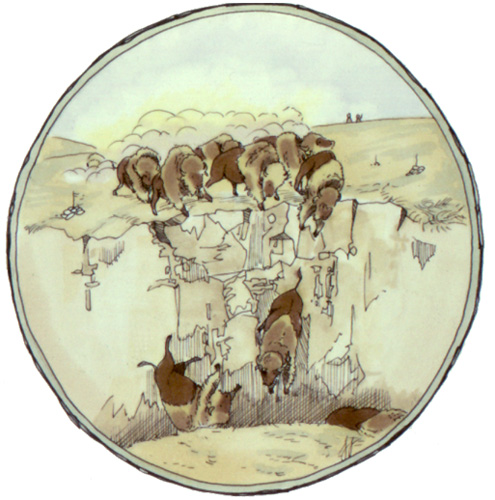Head-Smashed-In, Sketch

The bison, which once roamed the North American plains in countless numbers, were central to the native way of life. Its flesh was food, its hide clothing and tipi covers, its dung fuel. But each buffalo weighed more than 800 kilograms (1,760 pounds), could run at 50 kilometres (or 30 miles) and hour, and upwind could easily detect one of those untrustworthy human beings. Killing bison required ingenuity. In the days before the introduction of the horse, buffalo jumps - of which more than 100 have been found in North America - were the most efficient way of harvesting herds.
Painting courtesy of Heartland Associates, Inc.
Illustration by Amanda Dow.






